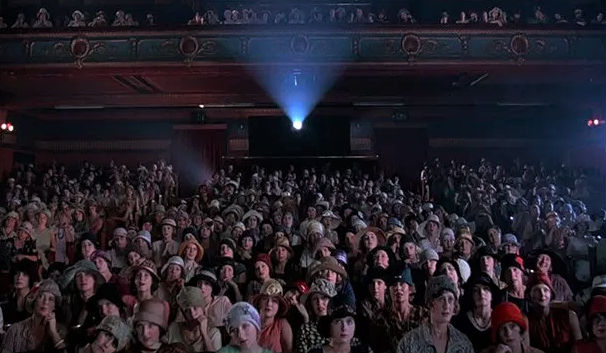Do you overlook viewing a movie in an real theater, the communal, practically spiritual hurry of sharing an emotionally compelling, visually rapturous illusion with an audience? Paul Anton Smith’s “Have You Found My Film?” (2016) presents the up coming best issue, a motion picture consisting of deftly edited clips from videos in which folks look at motion pictures, and in some cases in which men and women view motion pictures in which individuals enjoy flicks. And in accomplishing so, Smith achieves a self-reflexive, exhilarating, and at periods claustrophobic examination of how cinema is exhibited, watched, and recycled.

The films culled range chronologically from the Lumiere Brothers’ primal cinematic trompe l’oeil “L’arrivée d’un coach à La Ciotat” (1896) to the 2012 biopic “Hitchcock” alphabetically from Fellini’s “8½” (1963) to David Fincher’s “Zodiac” (2007) and qualitatively from Truffaut’s “Jules and Jim” (1962) to Adam Sandler’s “Jack and Jill” (2011). There are extra than a thousand videos, and they are all listed at the conclude — see how a lot of you identified!
These are structured not so much by themes as by rituals of the moviegoing working experience. They include the initiation ceremony of the box place of work, as an underage Nicholas Hoult sweet talks his way into a screening of “A Clockwork Orange” (1971) in Richard E. Grant’s “Wah-Wah” (2005). Slice to Woody Allen in “Annie Hall” (1977) as he suffers by a fellow patron’s pompous viewpoints about Fellini although ready in line to see Ingmar Bergman’s “Face to Face” (1976).

Then there are the inescapable annoyances from other viewers associates, unwelcome call as in Mickey Rourke’s notorious popcorn box scene in “Diner” (1982), or obnoxious conduct as with Robert De Niro’s cigar puffing, guffawing psychopath in Martin Scorsese’s remake of “Cape Fear” (1991). Other conventions coated are purple carpets at premieres, tears jerked at tear-jerkers, screams at horror films, violence on the screen and in the theater, persons reciting traces along with the film as Charlton Heston does though seeing “Woodstock” (1970) in “The Omega Man” (1971), and so on.
Smith interlinks these disparate segments with match cuts, eyeline matches, and other devices, hopping from just one movie to the up coming, interweaving one with one more to build a meta-cinematic universe of intertextuality. In its idea and modifying procedures it could possibly remind you of Christian Marclay’s 24-hour-extended, moment-by-moment epic “The Clock” (2010), for which Smith served as an assistant editor. But when “The Clock” plays with much more profound suggestions these kinds of as the nature of time and cinema and the aesthetic this means of montage, and which despite its length has a compelling stress and trajectory, Smith’s movie is often listless and struggles in some cases to rise earlier mentioned the degree of intelligent connections and movie trivia. And when he switches abruptly from a minute in a treasured movie to a scene in a person of lesser curiosity, it’s much more a frustration than a tease.
When it scores, however, it delivers shivers. Which is the case when Smith presents the overall, rapturous “Cheek to Cheek” sequence in “Top Hat” (1935) with its epic Fred Astaire and Ginger Rogers pas de deux. He sensibly interrupts it only to slice to scenes of enraptured audiences in different videos viewing the similar scene.
Which is what films do at their finest, engage strangers in a frequent feeling of transcendence. But it may well be a dying art. The recurrent scenes of the mechanics of projection, of celluloid slash and pasted jointly and projectors getting fixed in movies like Wim Wenders’s “Kings of the Road” (1976) are reminders that these tactile mechanics have extended considering the fact that passed into digital oblivion, and the age of theatrical viewing, in portion simply because of the COVID pandemic, may before long follow.
“Have You Found My Motion picture?” can be streamed at the Brattle Theatre’s Brattlite: A Virtual Cinema commencing Feb. 5. Go to little bit.ly/2MNCckR.
Peter Keough can be achieved at [email protected]
